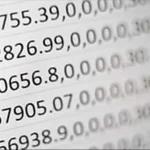Utilizing computer vision in education can help enhance student learning outcomes by evaluating their participation rates in both physical and interactive classrooms. In the modern form of education, lectures are delivered through mutual evaluation of the entire group of students. Each student, however, has a unique way to understand things and different levels of intelligence. Therefore, some students may be disinterested in particular lectures because they may not be able to understand what is being taught, or the style of teaching may not appeal to the students.
However, in a large classroom, such students may go unidentified considering the teacher to the student ratio at 16:1. This can influence the students’ grades. Computer vision can help identify disengaged students so teachers can take the appropriate steps to increase the level of interest among the students in the class. The use of computer vision in education can also help teachers perform their tasks more effectively, such as monitoring students during exams.
Here’s How Computer Vision will Support Academics:
The Role of Computer Vision in Educational Institutions
Computer vision can help ease students’ learning processes, as well as help teachers better monitor their students. Teachers and students are thus able to benefit from the use of computer vision in education. This is how computer vision can be of help to the education sector. It can improve levels of engagement, assist in conducting online exams, and reduce fraud cases.
- Improving Engagement Levels: Computer vision tools may be used to evaluate body posture, eye movement, and student behavior. It can help to quickly and effortlessly recognize disengaged students and teachers can intervene immediately to support these students. If a large number of students in a given lecture appear disengaged, teachers may change their teaching techniques to create highly interactive, engaging, and easy-to-understand lectures for the students.
- Conducting Online Exams: Computer vision software can help teachers conduct online tests. Students may be detected using an essential device such as a webcam. This can also serve as an online surveillance agent by continually tracking the movements, body language and other activities of the students. Apart from using computer vision for student identification, the candidates’ internet activity and microphone need to be analyzed to detect instances of fraud or unethical practices.
- Reduce Fraud Instances: Cheating instances in an exam (online or in a classroom) can be minimized by observing the students’ facial expressions and voice samples. In fact, video clips of situations where students are caught cheating can be used as evidence. Computer vision may also be used in combination with artificial intelligence to evaluate papers. Using these technologies demonstrate to be a time-efficient method since these instruments can work faster than humans. The technology can be used to classify related responses to open-ended questions provided by students. These incidents typically go unnoticed because teachers tend to review a large number of papers and can go undetected.
Use of Computer Vision
Computer vision can help strengthen student-teacher relationships because teachers can pay attention to individual students, particularly those facing difficulties. It will further boost the student’s academic performance and increase their level of trust. In today’s day and age, this is much needed and beneficial, with increased competition and the pressure from students to perform better. The use of computer vision in education often eases the workload for teachers, leading to a win-win situation for both students and teachers.










